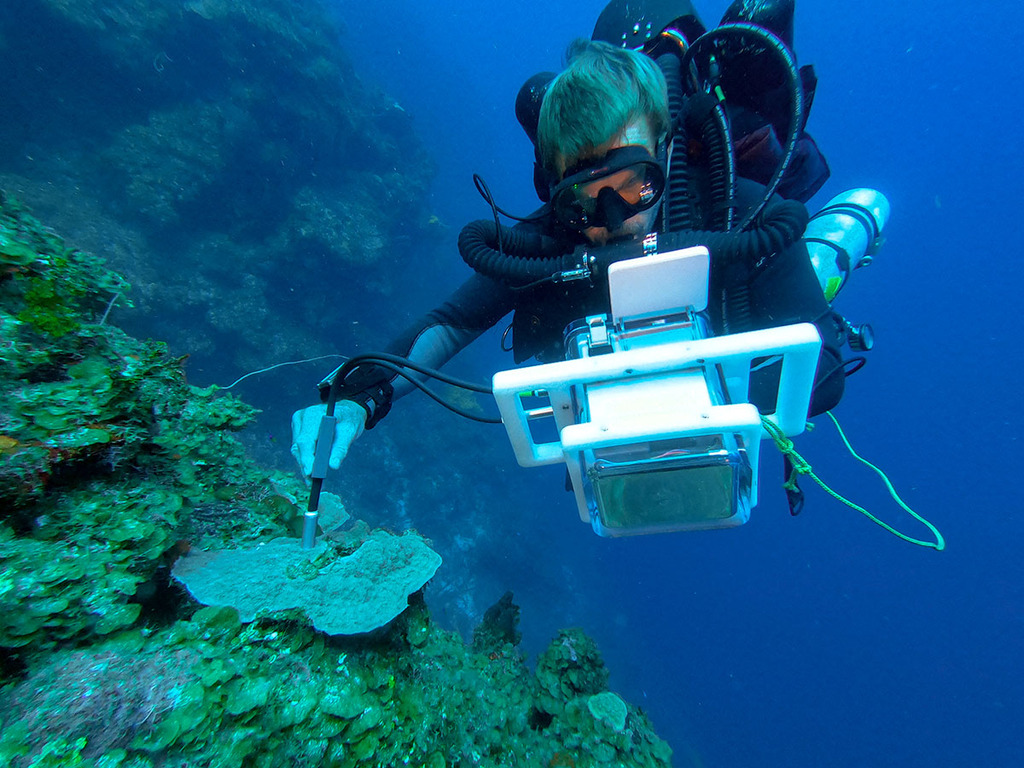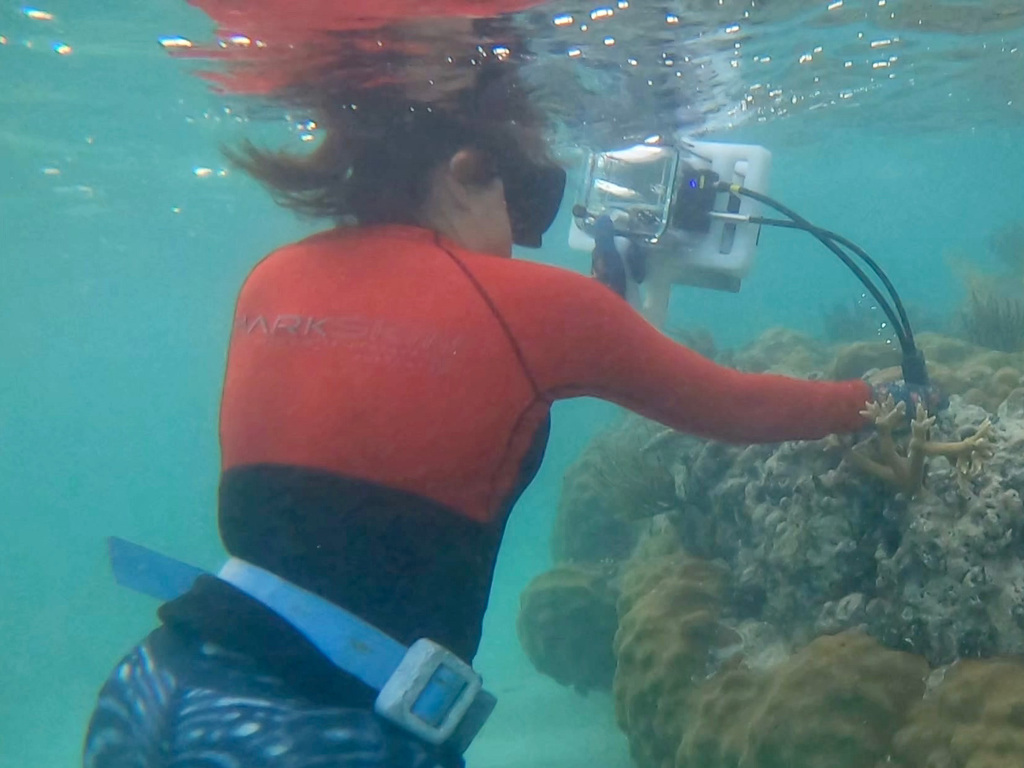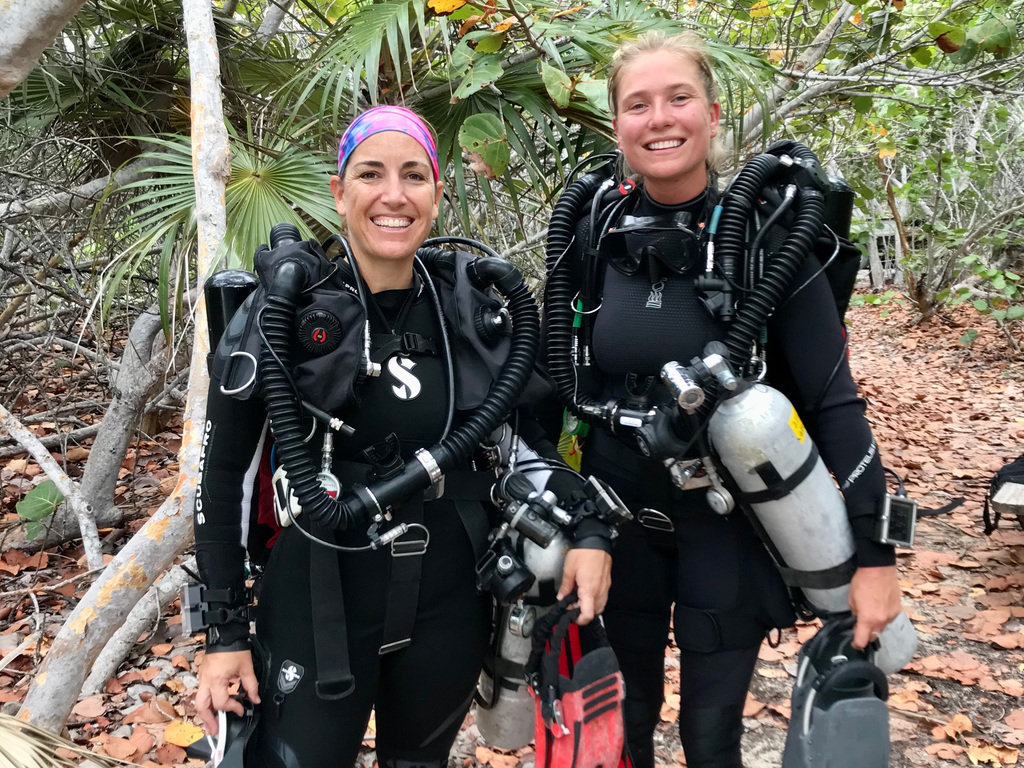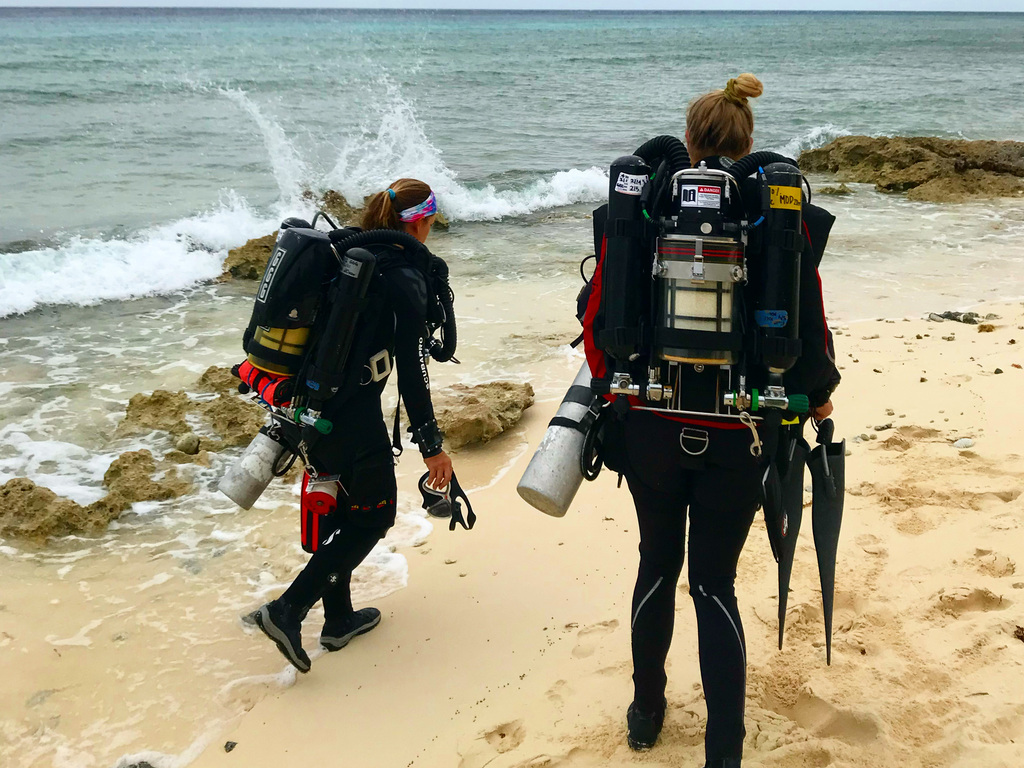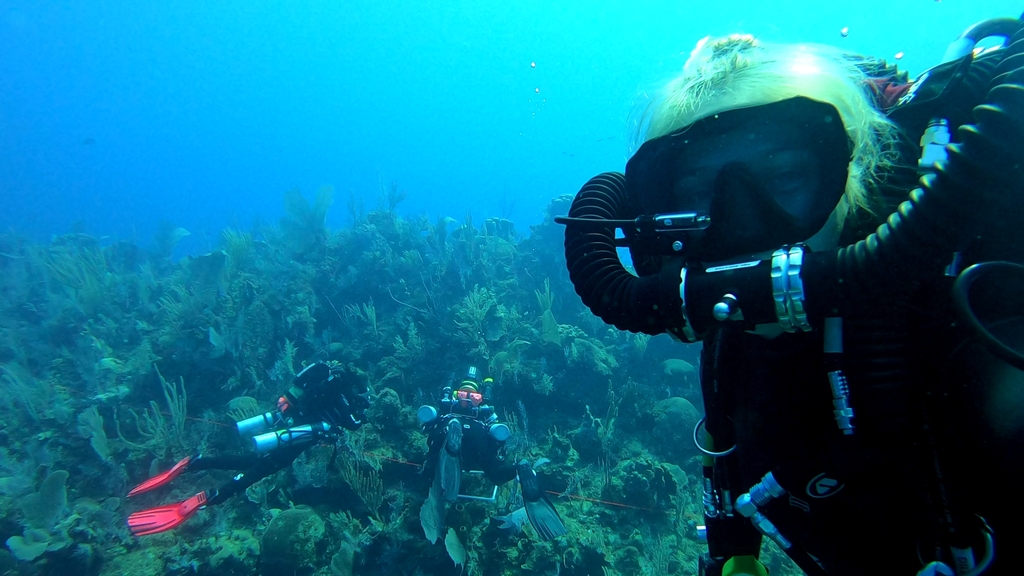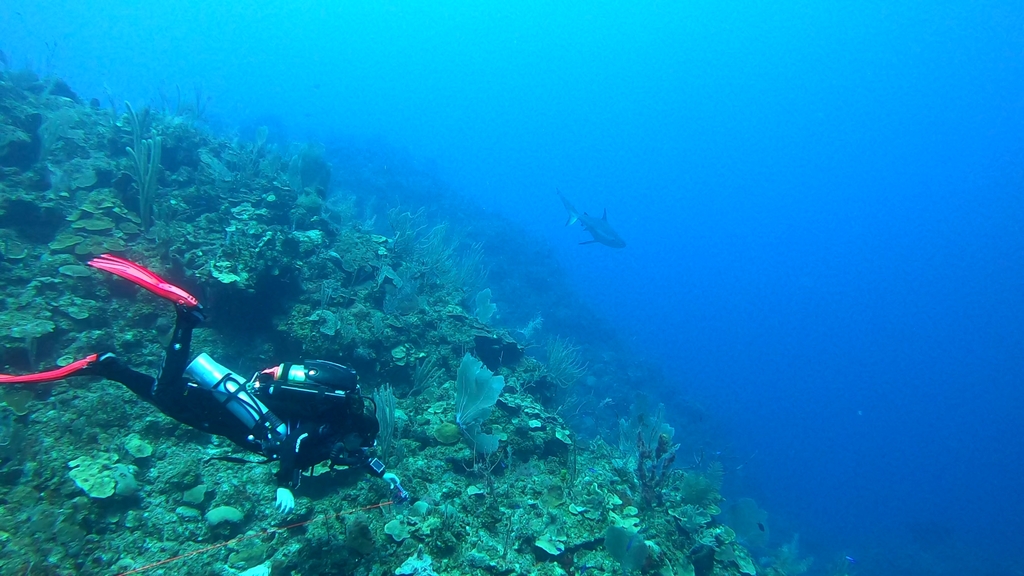Behind the science:
Light and photoacclimatization drive distinct differences between s...
2022, October 19
Posted by Pim Bongaerts
Fields
Biodiversity
Community structure
Physiology
Focusgroups
Overall benthic (groups)
Scleractinia (Hard Corals)
Locations
Cayman Islands
Platforms
Rebreather
“Light and photoacclimatization drive differences between shallow and mesophotic coral communities”
How do you pronounce “mesophotic” – ‘mee-so’ or ‘meh-so’ -photic?
‘mee-so’ -photic
Are you more interested in charismatic megafauna or scouring the benthos for cool creatures?
I would much rather scour the benthos for cool creatures! If I am ever on a fun dive, I am searching for nudibranchs or frogfish.
What was the most challenging aspect of your study (can be anything from field, lab to analysis)?
The fieldwork and analysis of the FIRe fluorometer required a learning curve. The instrument is extremely sensitive and needed to be properly calibrated and handled carefully underwater. This took some practice and help from the developer, Maxim Gorbunov, but in the end it worked out well. It is an incredible tool to examine photophysiology across and provided unique insight to the coral community in Little Cayman.
What was the most memorable moment in undertaking this study?
The dives! Conducting technical dives in Little Cayman is amazing because you have a beautiful wall to come up and make deco stops. While we were not able to go deeper than 45m for this study because of limited gas availability, it was still great to explore the wall the entire duration of the dive.
What was your favorite research site in this study and why?
This is a tough question because they are all so breath taking. If I had to choose one, it would probably be Martha’s Finyard. The reef at the top of the wall is a great spot for schools of fish and sharks! The Caribbean reef shark in image 6 was following us for an entire dive while taking photoquadrat images.
Other than your co-authors, with whom would you like to share credit for this work?
There are a few key members at Central Caribbean Marine Institute (CCMI) that made this work possible. First is Lowell Forbes, who is the captain of the boats. He has incredible knowledge of these reefs and was invaluable for making sure we were safe in the water and ensuring that we could simultaneously collect data above and below the surface. My co-worker Cali Grink was also helpful during data collection and supportive during the writing process. In general, the entire staff at CCMI made this research happen as well as Maxim Gorbunov, who provided support the FIRe instrument.
Any important lessons learned (through mistakes, experience or methodological advances)?
Practice everything when the stakes are low before you collect your data. We had some equipment issues during our data collection, but we were able to catch anything before it was an issue or we had spent a lot of time sampling because we tested everything on check-out dives before diving on the wall.
Can we expect any follow-up on this work?
This research is part of a larger NSF-BSF grant under PI’s Dr. Gretchen Goodbody-Gringley and Dr. Tali Mass. Follow-up work is already underway examining photophysiology of corals in the Gulf of Eilat, Israel. I am currently pursuing a PhD in the Seascape Ecology Lab at Louisiana State University focusing on mesophotic coral reef ecology and disease, but am looking into avenues to continue work on photophysiology of mesophotic coral.
Featured article:
|
|
Light and photoacclimatization drive distinct differences between shallow and mesophotic coral communities | article Carpenter GE, Chequer AD, Weber S, Mass T, Goodbody-Gringley G (2022) Ecosphere 13:e4200 |

|
.jpg)
